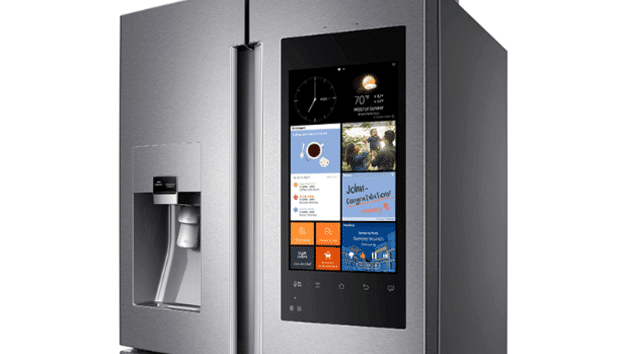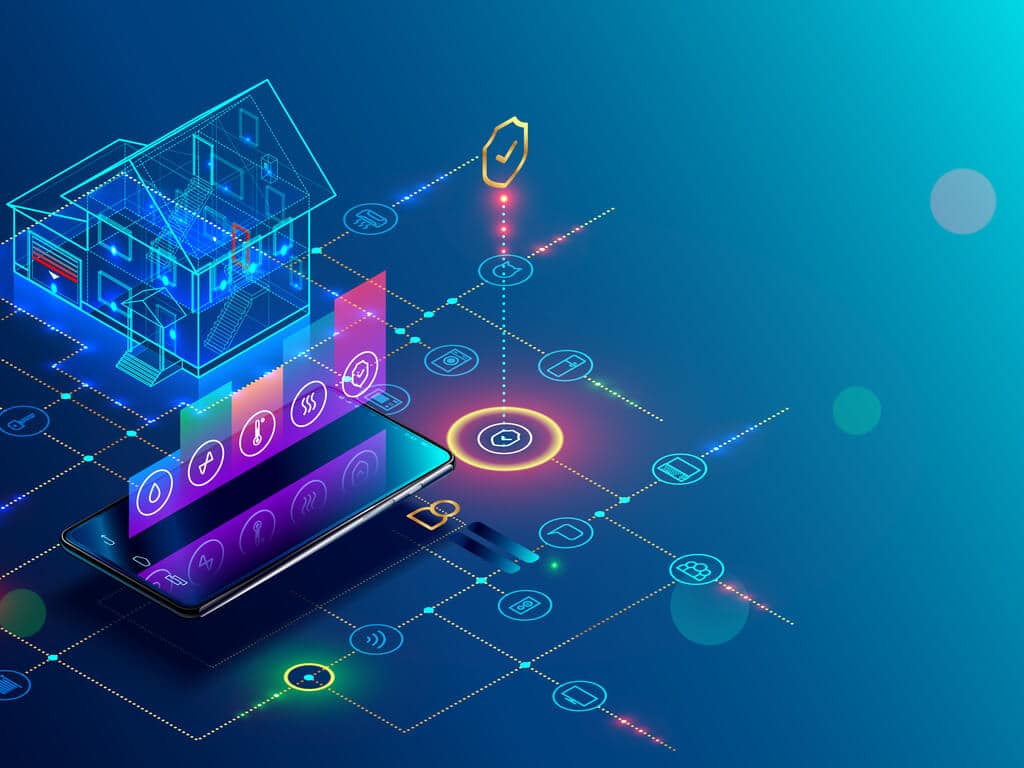The IoT is the system of devices that connect to the internet and to each other through wireless networks. It is comprised of everything from your smart thermostat, to the camera that records activity on your front porch, to the dishwasher you control from an app on your smartphone. Any “thing” that connects to the internet and transmits data via sensors is an IoT device.
How does IoT Work?
IoT devices are generally controlled through an app on your smartphone. They contain sensors and processors, almost like mini computers. IoT devices use machine learning, in other words, they collect data from their surroundings, to learn your preferences and adjust accordingly. Because of their capabilities, they normally don’t require programming.
As technology continues to advance, IoT devices become smarter and even more connected. They work together to improve your household functionality, and even make regular chores, like grocery shopping, easier. For example, when your smart fridge senses you’re near a supermarket, it alerts you that you’re low on essentials like Mountain Dew and string cheese!
Is IoT Secure?
Like anything connected to the internet, IoT devices are vulnerable to cyberattacks. Your internet-connected smart TV, door locks, or security cameras can be hacked, giving cybercriminals access to your home, and violating your privacy. IoT devices also collect personal data that can be used to steal your identity.
IoT devices are most often controlled through apps on your smartphone. As you add more things to your IoT, your phone is the doorway to more information and more access to your life. There are ways to help protect yourself.
7 Ways to Protect your Internet of Things and Other Connected Devices
It is critical to take cybersecurity seriously – whether in the office or at home. Hackers today are increasingly sophisticated and continue to come up with new ways to try to infiltrate your electronic world. Here are some ways to increase your security
- Never leave your smartphone unattended in public. Secure it by activating facial or fingerprint recognition, or by setting up a PIN. If you’re not using your phone and you’re in a crowded place, consider turning off Wi-Fi or Bluetooth.
- Install reputable security software on your phone, tablets, and computers.
- Use different passwords for everything – devices, apps, your Wi-Fi network, and online accounts. Make each one something that’s easy for you to remember, but difficult for anyone else to figure out.
- Do your research before you buy IoT devices. Understand what types of data the device collects, how it’s stored, if it’s shared, and what protections are in place to prevent data breaches.
- Check the device manufacturer’s website regularly for firmware updates and install them.
- Be careful about giving apps permission to access data on your phone when it seems unnecessary. Also check their privacy policies to see how your information will be used or shared.
- Exercise caution when sharing information on social networking sites – “checking-in” to locations or posting vacation photos while you’re travelling lets criminals of all types know you’re not home.
The Internet of Things is continuously evolving with new products hitting the market all the time. These devices can make life easier and more fun – as long as you have security top of mind and use them wisely!


